Scones & Puddings (PART 1 OF 3)

(yen0201.gif)
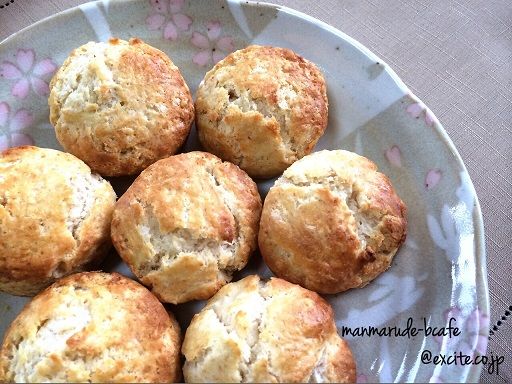
(scone01.jpg)
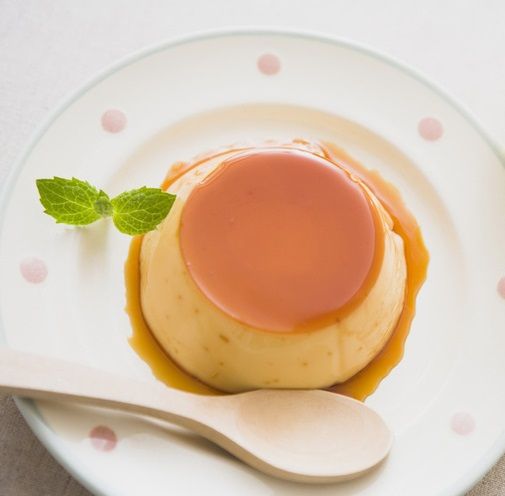
(pudding01.jpg)

Denman-san, do you like scones and puddings?

Oh yes, I do. How about you, Mari-chan?
I like those, too Actually, I wrote an article about scones.
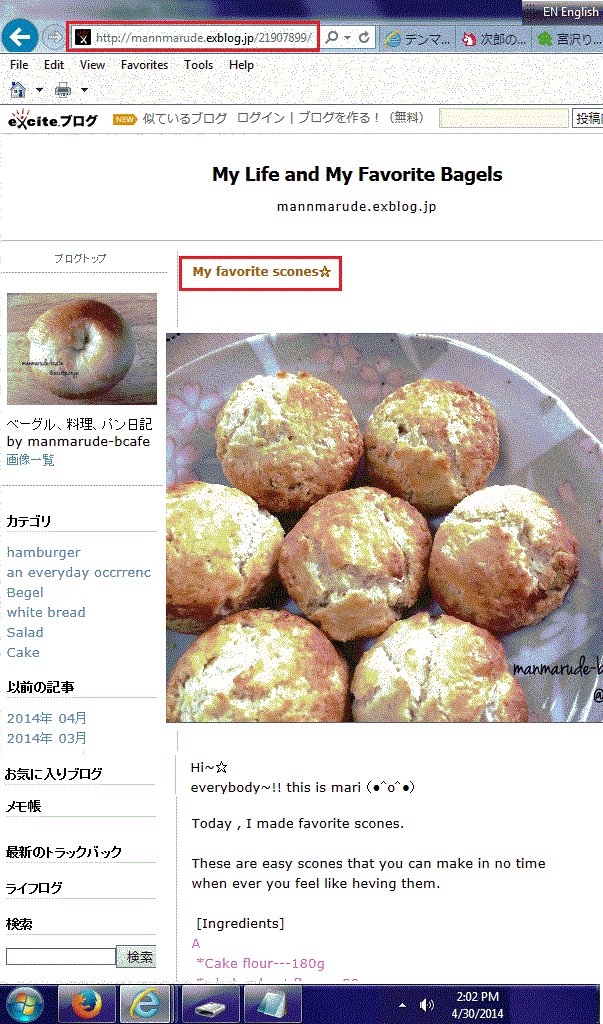
(mar40427e.gif)
■"Actual Page"

I know... I read the above article and jotted down a comment.

Did you? I've been busy going out with some friends these days. I'll read your comment once I get back to my computer. How did you like my article?
To tell you the truth, I've got a rought idea what a scone is, but I've never looked it up in the dictionary. So here is an explanation from Wikipedia.
Scone
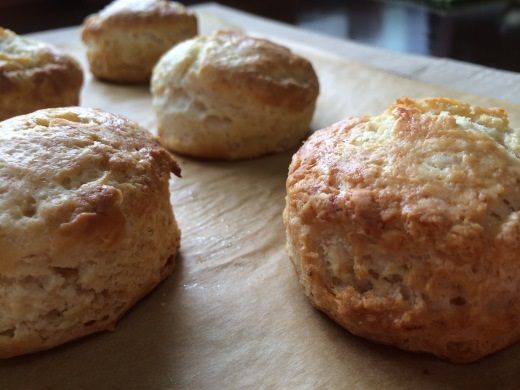
(scone03.jpg)
A scone is a single-serving cake or quick bread.
They are usually made of wheat, barley or oatmeal, with baking powder as a leavening agent, and are baked on sheet pans.
They are often lightly sweetened and are occasionally glazed.
The scone is a basic component of the cream tea or Devonshire tea.
It differs from a teacake and other sweet buns, which are made with yeast.
A scone is in some senses a type of pastry since it is made with essentially the same ingredients as shortcrust, though with different proportions of fat to flour.
Varieties
British scones are often lightly sweetened, but may also be savoury.
They frequently include raisins, currants, cheese or dates.
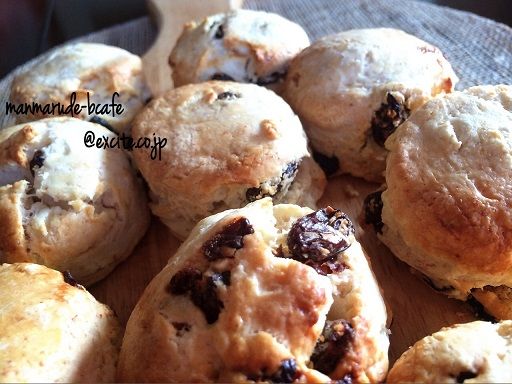
(scone02.jpg)
In Scotland and Ulster, savoury varieties of scone include soda scones, also known as soda farls, and potato scones, normally known as tattie scones, which resemble small, thin savoury pancakes made with potato flour.
Potato scones are most commonly served fried in a full Scottish breakfast or an Ulster fry.
The griddle scone (or "girdle scone" in Scots) is a variety of scone which is fried rather than baked.
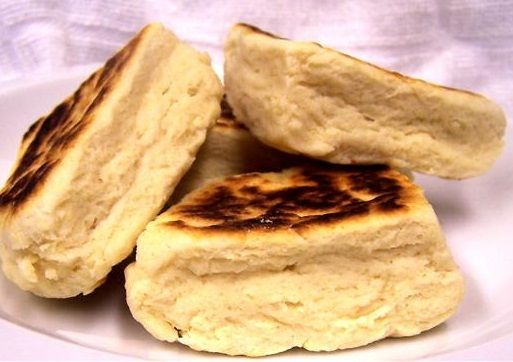
(scone04.jpg)
griddle scone
This usage is also common in New Zealand where scones, of all varieties form an important part of the traditional colonial cuisine.
Other common varieties include the dropped scone, or drop scone, like a pancake, after the method of dropping the batter onto the griddle or frying pan to cook it, and the lemonade scone, which is made with lemonade and cream instead of butter and milk.

(scone05.jpg)
drop scone
There is also the fruit scone or fruited scone, which contains currants, sultanas, peel and glacé cherries, which is just like a plain round scone with the fruit mixed into the dough.
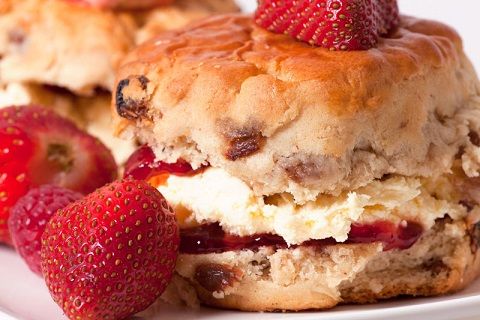
(scone06.jpg)
fruit scone
In some countries one may also encounter savoury varieties of scone which may contain or be topped with combinations of cheese, onion, bacon, etc.
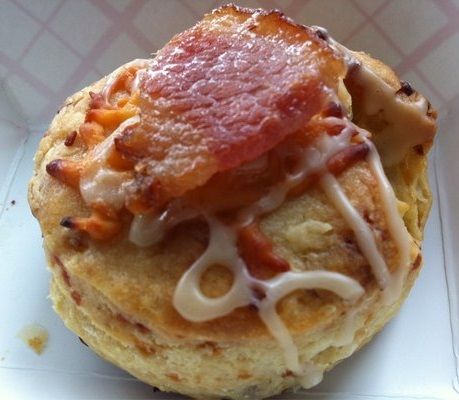
(scone07.jpg)
bacon scone
SOURCE: "Scone"
Wikipedia, the free encyclopedia

I didn't know that there are so many varieties.

I know there are some varieties, but I've never tried fruit and bacon scones. I'll make them someday.
Scones look like muffins, don't they? Tell me, Mari-chan... What's the difference between scones and muffins?
I think both are almost the same, but I gather that the scone originated in Scotland and is eaten mostly in commonwealth countries such as Canada, New Zealand, Australia and Ireland, and now also in the United States.
How about muffins?
It is hard to say where muffins originated, but American-style muffins are very popular as a breakfast snack served warm either sweet or savory in America. A friend of mine told me that the blueberry muffin is the official state muffin of Minnesota.

(muffin01.jpg)

Ummmm... looks delicious. I like the blueberry muffin.

Oh, do you? The American-style muffins are not made from a yeast dough, but use a chemical leavener---baking powder or baking soda---along with flour, milk, sugar and butter. It is a cross between a bread and a cake.
How about scones?
Scones are made from wheat, barley or oatmeal, often with baking powder as a leavening agent, and butter, sugar, milk and eggs.
I see... Is there any difference in shape and texture?
Oh, yes... The perfect American muffin is symmetrical with a domed top. The surface of the muffin should be bumpy, and the volume of the batter should have almost doubled during baking. The muffin should feel light for its size and when cut in half its interior should be moist and tender with no tunnels.
I often notice a typical domed top on the muffin like this.
(To be followed)